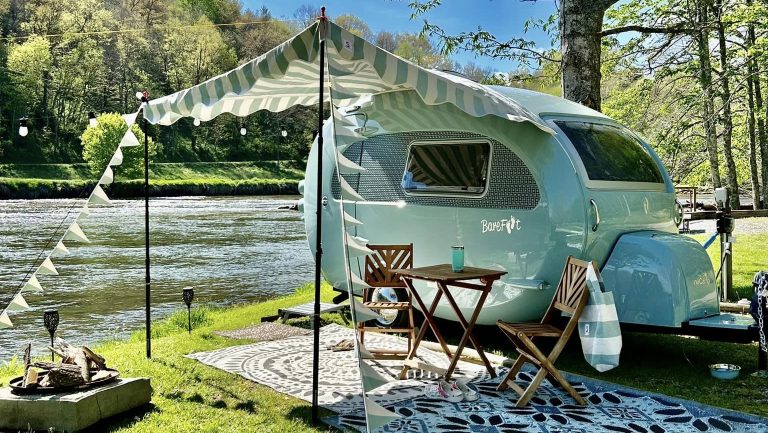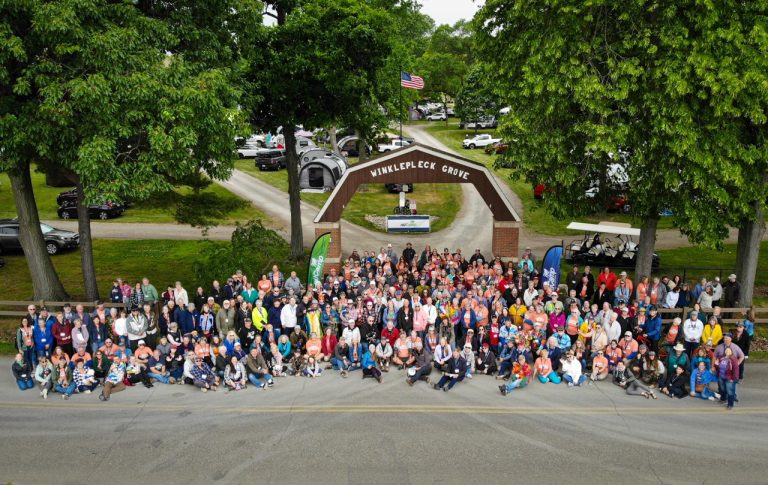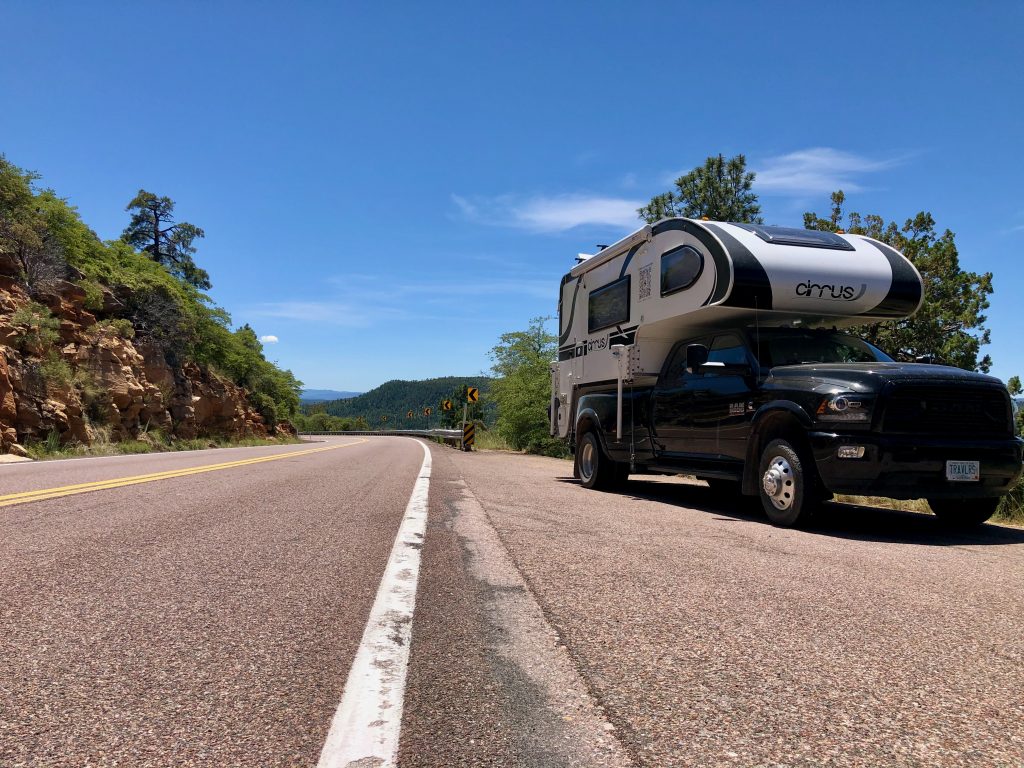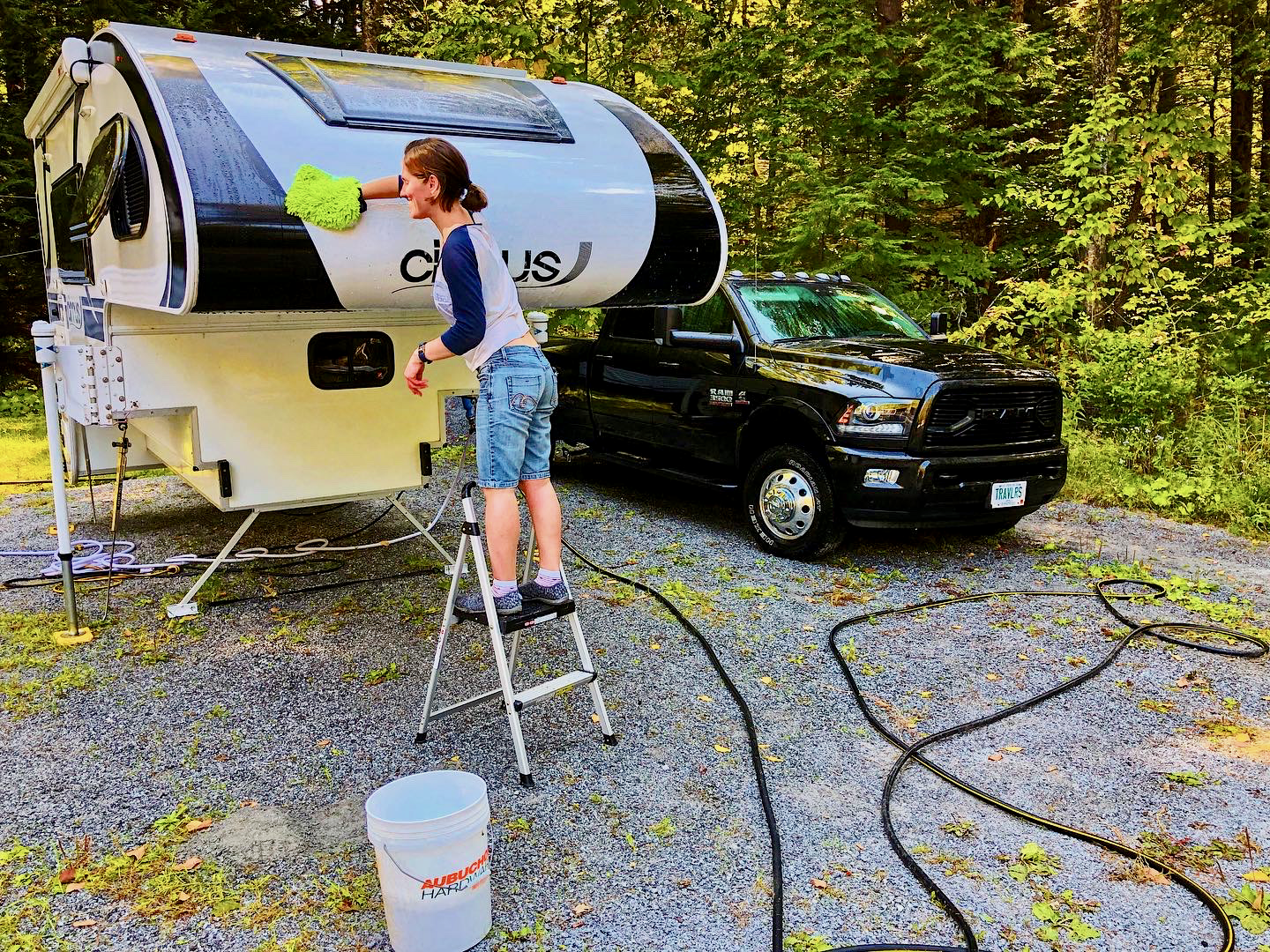In Part 1, Sasha Bezer and Scott Gregson shared their transition from living in a bricks-and-mortar house to being full-time campers in their Cirrus 920. In this segment, they explain what drew them to the Cirrus, how they customized it, and what advice they have for others who want to modify their camper.
You can also check out their website at https://www.stonyboot.com/.
What was it that made you decide on the Cirrus 920 as your home-on-wheels?
Scott: “Soon after we got married in August 2016, we ended up getting a 2015 Coachmen Clipper 17FQ and did quite a bit of camping with it. All of those experiences led us to a truck camper since it gave us the best balance of the factors that we found important. We wanted a hard side, non-slide truck camper that was similar in width to the truck hauling the camper. The shape, size, and style of the Cirrus 920 was ideal for what we were looking for.”
Sasha: “The truck camper also lets us explore rougher terrain without having to tow anything. We also loved the idea of being able to boondock in more remote areas, so having a truck with 4×4 and a camper that sits on top is a huge benefit. Our goal was to pick something that would be functional, have enough storage, and would also look good. We wanted a modern look that we’d be happy living in full-time. Most of the campers have an outdated interior and we didn’t want to buy something that we already didn’t like. When we saw the Cirrus 920, we fell in love with the functionality and design, and it was within our budget. So, we bought the 2019 Cirrus 920 in June 2019.”
So you loved the looks and the price of the Cirrus 920. What else about it rates 5 stars on your list?
Scott: “Water capacity! Given the size of the camper, the water tank capacity was pretty generous compared to similar models on the market. I also liked the half-basement concept (I’m not sure what it’s really called). It has a shallow basement for much of the water storage but doesn’t add too much height. It was a great trade-off between no basement and a full, deep basement. Our overall height is 11’6” which is perfect and a little shorter than other rigs we encounter.”
Sasha: “The silent heating system. Most campers out there have a rather loud furnace. We anticipated camping in cold weather and wanted to make sure that we can sleep through the night and stay warm. The Alde system remains very quiet at all times. The camper also has heating vents, so the heat disperses evenly around the camper, including the bathroom.”
Scott: “The Alde system is quiet, energy-efficient, and allows us to get our heat and hot water with electricity when we are plugged in. Aside from topping off the glycol every few months, it has been trouble-free and very reliable, even at 13,000 feet. We did make sure we chose a Cirrus 920 with the Alde 3020 since it had some improvements over the 3010 that were important to us. We also liked the idea of possibly upgrading to the Alde Flow system in the future, but it hasn’t been a priority yet. We use the Alde on a daily basis for hot water and when it gets cold, it’s the system that keeps us cozy and comfortable. Another reason I really like the Alde is that it’s a forced hot water system instead of hot air. It helps retain moisture in the air and keeps it from feeling too dry. Now that I’m thinking this out, the Alde might be my #1 reason!”
Any other aspects of the Cirrus that you want to highlight?
Sasha: “We absolutely love that we have a skylight in the right spot! Most campers that we looked at have it in the middle of the bed, which makes it difficult to lay down and watch the stars. Also, our windows have a great latching system and black-out curtains, which gives you great privacy and also blocks out the sun when needed.”
How did you decide on your tow vehicle?
Scott: “It was a toss-up between the big three truck makers, and we settled on the 2018 Ram 3500 Dually Diesel CrewCab Ram because of the engine and the interior fit and finish. It seemed to be the best compromise between all of the other options. We do run at our max GVWR, but it’s still safe and legal.”
Sasha: “We wanted to make sure that our truck will support the weight of a fully-loaded camper. By fully loaded I mean a camper with all of our clothing, food, tools, and all of the water tanks full. Dual rear wheels help us stay stable in windy conditions and add payload capacity.”
What were some of the upgrades you made to your camper?
Scott: “We replaced the bathroom sink with the new style square sink and upgraded kitchen sink with one a little wider and deeper, plus changed the faucet to one with a removable sprayer head. We also added an aluminum cargo box that matches the existing aluminum bumper. It gives us extra storage for many of our camping items like cords, rope, hoses, and some tools.”
Some of your changes were due to your work-from-home situation, correct?
Scott: “Yes. We completely redesigned the dinette area and turned it into an office for two people. We have a desk facing out the large side window and a pull-out teak table in the center that we use for paperwork and eating. The side-mounted desk gives us a place to keep our laptops set up for extended periods when we are not moving. Now we can keep our computers going and have dinner without moving anything!”
Scott: “We also added a 2000-watt inverter to power everything: laptops, cameras, phones, and other equipment, and installed a custom set of LifePO4 lithium batteries, 600AH for plenty of power to run whatever we need. Two other additions were an external cell booster to help with low signal areas and a MoFi 4500 Hotspot paired with a cellular data plan to provide the bulk of our data needs. Finally, we installed a Honda 2200i generator and built a ventilation system that allows us to run it in that compartment. The benefit to this setup is that we can remove it and run it away from the camper when we are doing extended boondocking.”
What advice do you have for others who want to customize their camper?
Scott: “Research is the key. There is so much information out there on how to do these projects that you can build almost anything just by watching a couple of videos and reading some posts. There is still a certain amount of mechanical/technical knowledge and skill that is needed to accomplish most of these projects. A great method of accomplishing these tasks is to do what you can, then get help on what you struggle with. The RV community is full of talented people willing to lend a hand or the tools needed to complete projects. I tend to post ideas and questions in online forums to get solutions to problems. Plan things out, do some research, and have fun! I love making changes and upgrades and reaping the benefits of those upgrades!”
What plans do you two have for the future?
Scott: “As a couple, one of our major goals is to travel full-time around the world. Our Cirrus is the first step on that journey and will act as our mobile basecamp for adventures to come.”
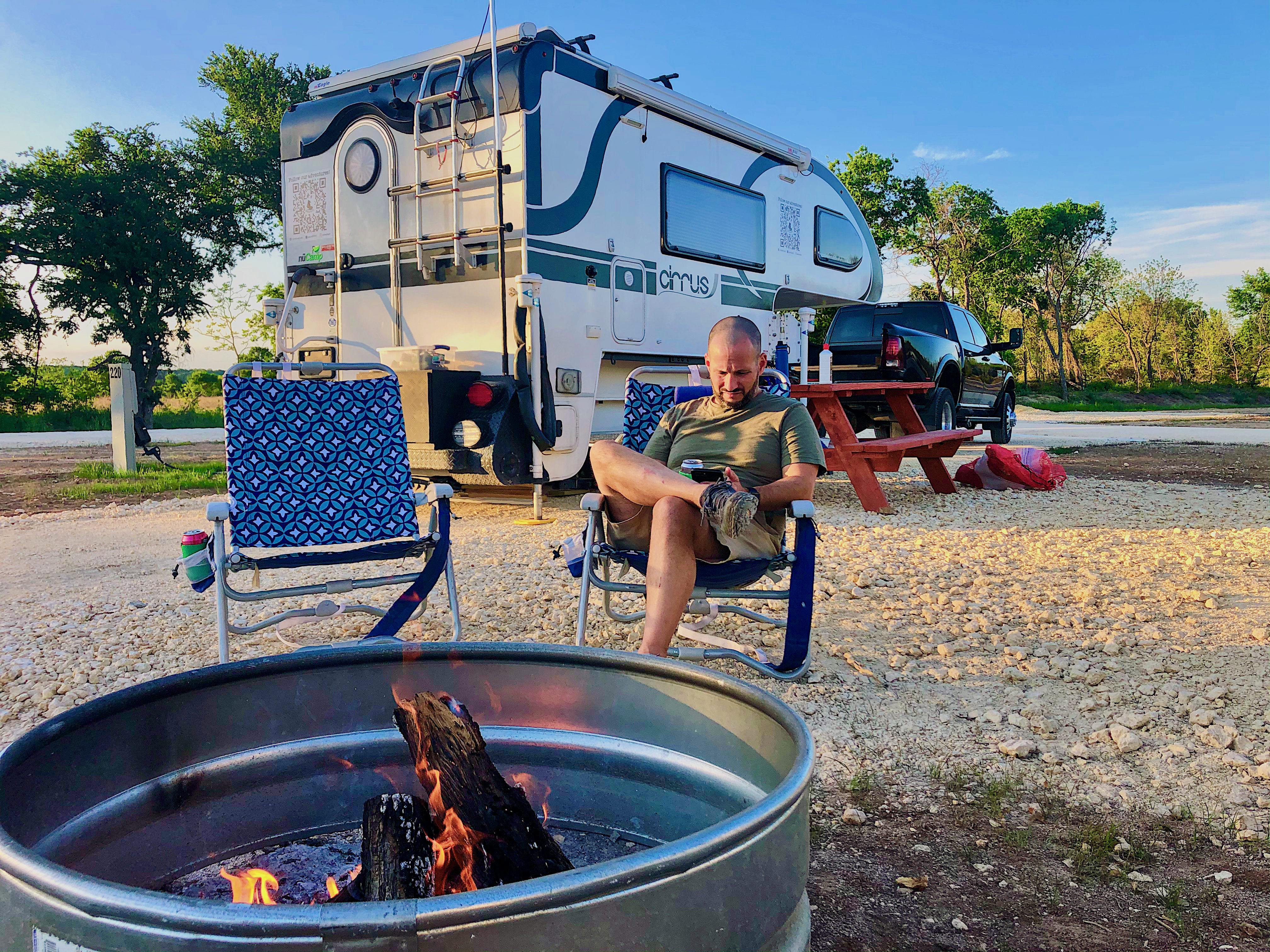
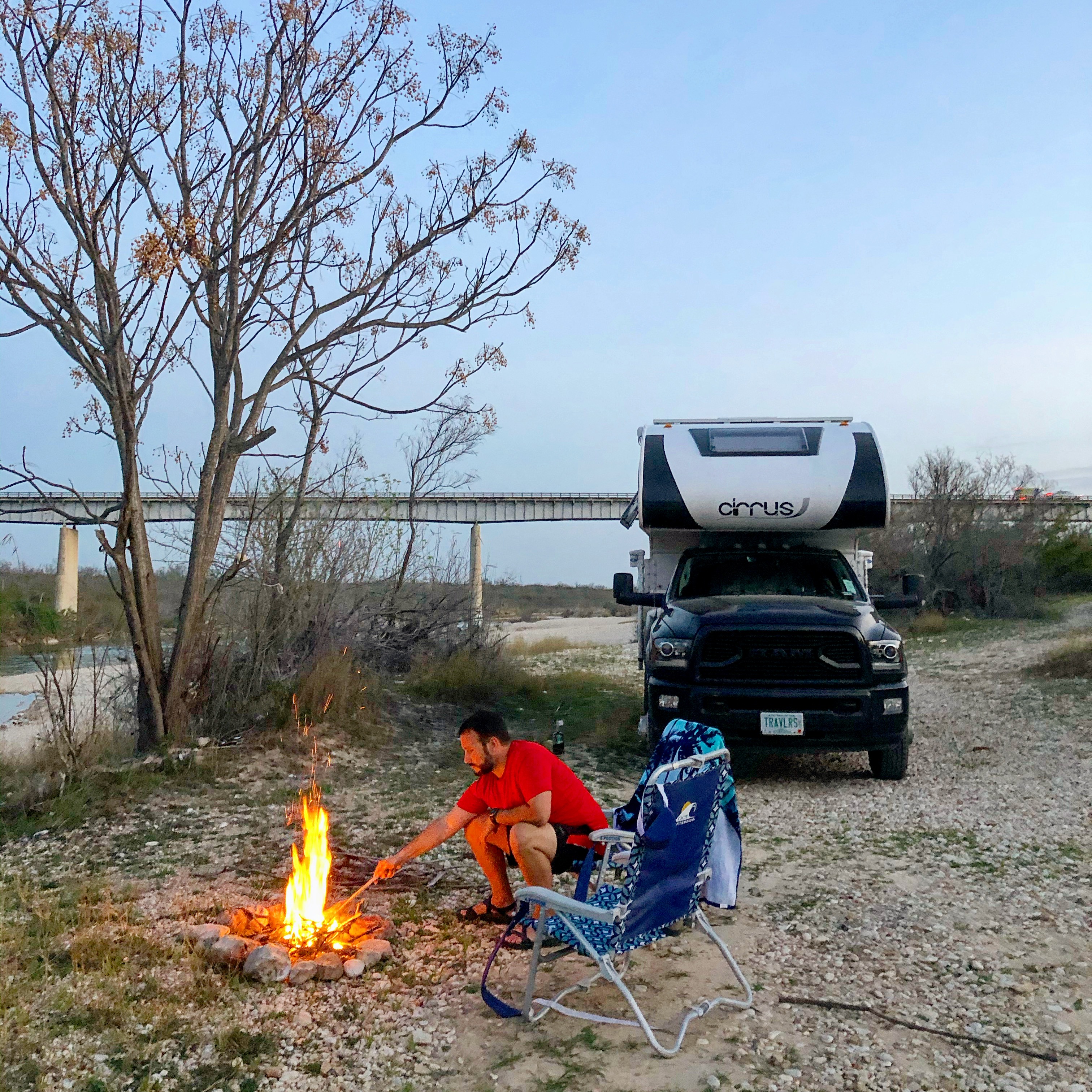
Recent Articles


